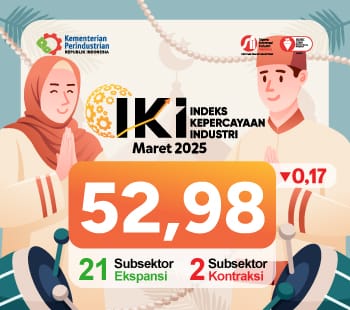Synopsys Study Shows Uptick in Vulnerable, Outdated, and Abandoned Open Source Components in Commercial Software
By : Nata Kesuma | Thursday, April 15 2021 - 12:10 IWST

Sypnopsys study
INDUSTRY.co.id - SINGAPORE, April 14th, 2021 – Synopsys, Inc. (Nasdaq: SNPS) today released the 2021 Open Source Security and Risk Analysis (OSSRA) report.
The report, produced by the Synopsys Cybersecurity Research Center (CyRC), examines the results of more than 1,500 audits of commercial codebases, performed by the Black Duck® Audit Services team.
The report highlights trends in open source usage within commercial applications and provides insights to help commercial and open source developers better understand the interconnected software ecosystem they are part of.
It also details the pervasive risks posed by unmanaged open source, including security vulnerabilities, outdated or abandoned components, and license compliance issues.
The 2021 OSSRA report affirms that open source software provides the foundation for the vast majority of applications across all industries. It also shows that those industries, to varying degrees, are struggling to manage open source risk.
100% of the companies audited in the marketing tech industry sector — which includes lead generation CRM, and social media — contained open source in their codebases. 95% of the marketing tech codebases contained open source vulnerabilities.
98% of healthcare sector codebases contained open source. 67% of those codebases contained vulnerabilities.
97% of financial services/fintech sector codebases contained open source. Over 60% of those codebases contained vulnerabilities.
92% of codebases in the retail and e-commerce sector contained open source, and 71% of the codebases in that sector contained vulnerabilities.
Of even more concern is the widespread use of abandoned open source components. An alarming 91% of the codebases contained open source dependencies that had no development activity in the last two years — meaning no code improvements and no security fixes.
“That more than 90% of the codebases were using open source with no development activity in the past two years is not surprising,” said Tim Mackey, principal security strategist with the Synopsys Cybersecurity Research Center.
“Unlike commercial software, where vendors can push information to their users, open source relies on community engagement to thrive. When an open source component is adopted into a commercial offering without that engagement, project vitality can easily wane. Orphaned projects aren’t a new problem, but when they occur, addressing security issues becomes that much harder. The solution is a simple one – invest in supporting those projects you depend upon for your success.”
Other open source risk trends identified in the 2021 OSSRA report include:
Outdated open source components in commercial software is the norm. 85% of the codebases contained open source dependencies that were more than four years out-of-date.
Unlike abandoned projects, these outdated open source components have active developer communities who publish updates and security patches that are not being applied by their downstream commercial consumers.
Beyond the obvious security implications of neglecting to apply patches, the use of outdated open source components can contribute to unwieldy technical debt in the form of functionality and compatibility issues associated with future updates.
The prevalence of open source vulnerabilities is trending in the wrong direction. In 2020, the percentage of codebases containing vulnerable open source components rose to 84% — a 9% increase from 2019. Similarly, the percentage of codebases containing high-risk vulnerabilities jumped from 49% to 60%.
Several of the top 10 open source vulnerabilities that were found in codebases in 2019 reappeared in the 2020 audits, all with significant percentage increases.
Over 90% of the audited codebases contained open source components with license conflicts, customised licenses, or no license at all. 65% of the codebases audited in 2020 contained open source software license conflicts, typically involving the GNU General Public License. 26% of the codebases were using open source with no license or a customised license.
All three issues often need to be evaluated for potential intellectual property infringement and other legal concerns, especially in the context of merger and acquisition transactions.
To learn more about the potential risks associated with open source software and how to address them, download a copy of the 2021 OSSRA report, read the blog post, or register for the April 21 webinar.
Read Also
President Prabowo Welcomes Ustaz Adi Hidayat, Representatives of…
Indonesian Citizen Cases in Cambodia Increase Sharply in Early 2025
Gloria Guevara’s Candidacy for UN Tourism Secretary-General Gains…
One of the UK’s Most Established Schools Chooses Jakarta for Their…
President Jokowi: Higher Education Plays Crucial Role in Producing…
Today's Industry

Jumat, 02 Mei 2025 - 10:46 WIB
Binawan and Government Support Indonesian Nurses in Europe through Scholarships
In the midst of the viral #KaburAjaDulu hashtag as a symbol of the young generation's disappointment with domestic working conditions, Binawan responded with real action: dispatching Indonesian…

Jumat, 28 Maret 2025 - 22:21 WIB
SUNeVision Initiates MEGA IDC Phase Two Development
SUNeVision, the technology arm of Sun Hung Kai Properties (SHKP), today announced the commencement of construction for Phase Two of MEGA IDC in Tseung Kwan O. As Hong Kong's largest data centre…

Jumat, 28 Maret 2025 - 22:07 WIB
TDL Records New Revenue Record of IDR 25 Trillion in 2024 Ahead of 50th Anniversary
PT Metrodata Electronics Tbk (MTDL), the largest technology Company with the most complete IT and telecommunications products in Indonesia, managed to record a revenue of IDR 25 trillion in…

Jumat, 28 Maret 2025 - 22:00 WIB
Wireless Logic Selected By Thales As IoT Connectivity Partner
Wireless Logic, a global leader in IoT connectivity solutions has been selected by Thales, a global leader in advanced eSIM technologies, to enable secure, scalable and resilient IoT connectivity…

Jumat, 28 Maret 2025 - 21:53 WIB
Microvista Expands International Presence with Mobile CT System ScanExpress
The German specialist in industrial computed tomography and non-destructive testing, Microvista, announces the European expansion of its innovative mobile CT system, ScanExpress. The system…

















News Comment